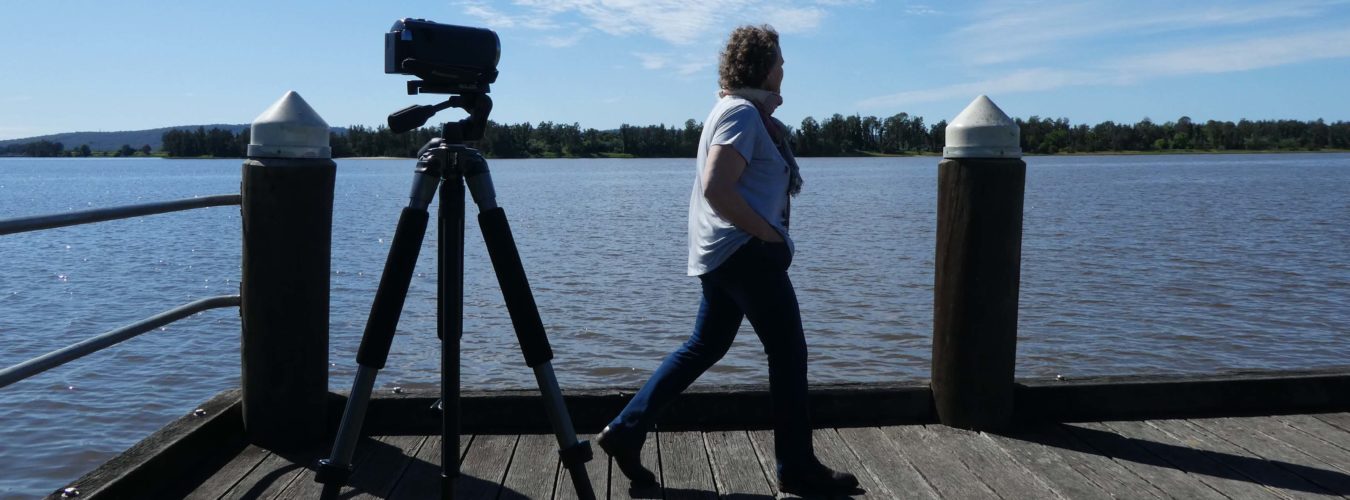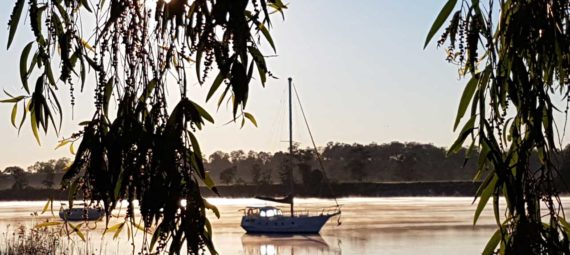The Clarence River is one of the largest in Australia and the biggest of all the northern NSW rivers. It’s 394km route from distant mountain ranges shapes the way of things in the valley. The river dominates the landscape, bestowes fertility on the agricultural flood plains, influences local architecture – and from time to time delivers a fearsome destructive flood. Intense rainfall typical of the valley means floods have always been on the agenda. Since records started in 1839, Grafton has had more than 120 floods – the highest just recently in January 2013 which reached 8.08m. And while the river is no longer a major transport and trade route (replaced by roads) the history and the future of the valley is all wrapped up with The Clarence. Given that fact, we decided to explore this waterway they describe as the “life blood” of the valley – from Grafton to the ocean. A leisurely drive along its banks to see what we could see. Here’s how it happened:

Start with the sunrise
I’ve yet to find a place that isn’t at its picturesque best on a clear day at sunrise. The soft light, the peace and quiet before the busy day begins, the cool freshness of it all. We drove into town very early from our bed and breakfast cottage and strolled out onto Grafton Bridge to wait for the sun. The unique bridge has pedestrian walkways on either side which face east to the rising sun and west to the sunset. From there you can get a good sense of the wide, slow moving reaches of The Clarence River. Do not forget your camera. The river looked at her sparkling best on the day we were there as mists rolled across the still surface, and the first rays of sun set everything shimmering. It’s a nice time to take a stroll along the river bank to see what’s what, to smell the smells, to hear the sounds and take in the scene.
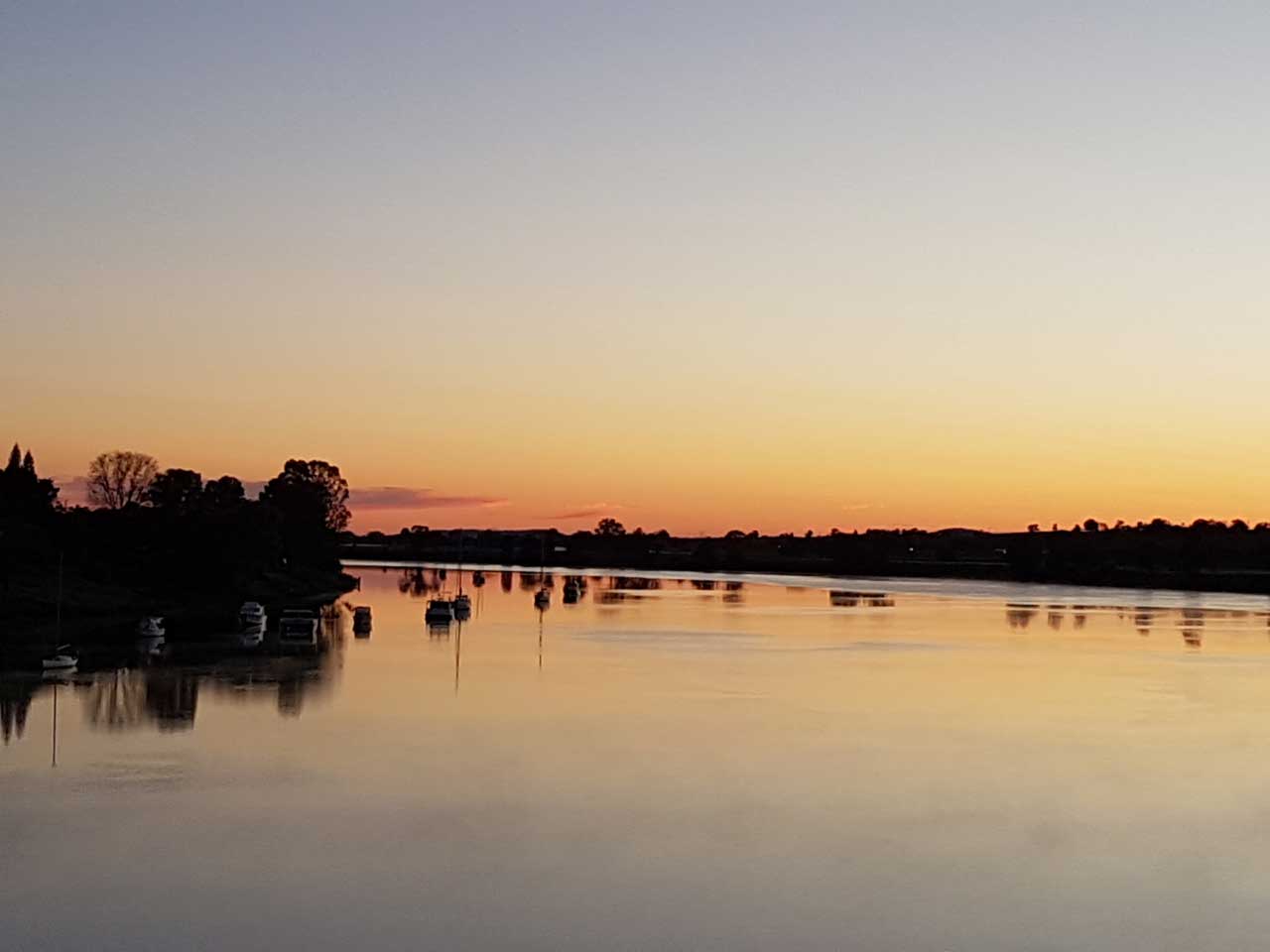
Time for Breakfast
Getting out of bed so early to watch the sun rise magestically over The Clarence deserves a reward – and ours was a nice breakfast. We headed for Heart and Soul Wholefood Cafe in Prince Street which opens at 7.30am for early starters like us. We ordered the French toast with caramelised banana, and an avo smash with poached egg. Coffee was good – and a particular shout out for the tea. Australia’s modern obsession with coffee drinking means it’s hard to get a good cup of leaf tea. Mostly it’s insipid luke-warm horror. Heart and Soul did a sterling job – nice and hot, no teabags.
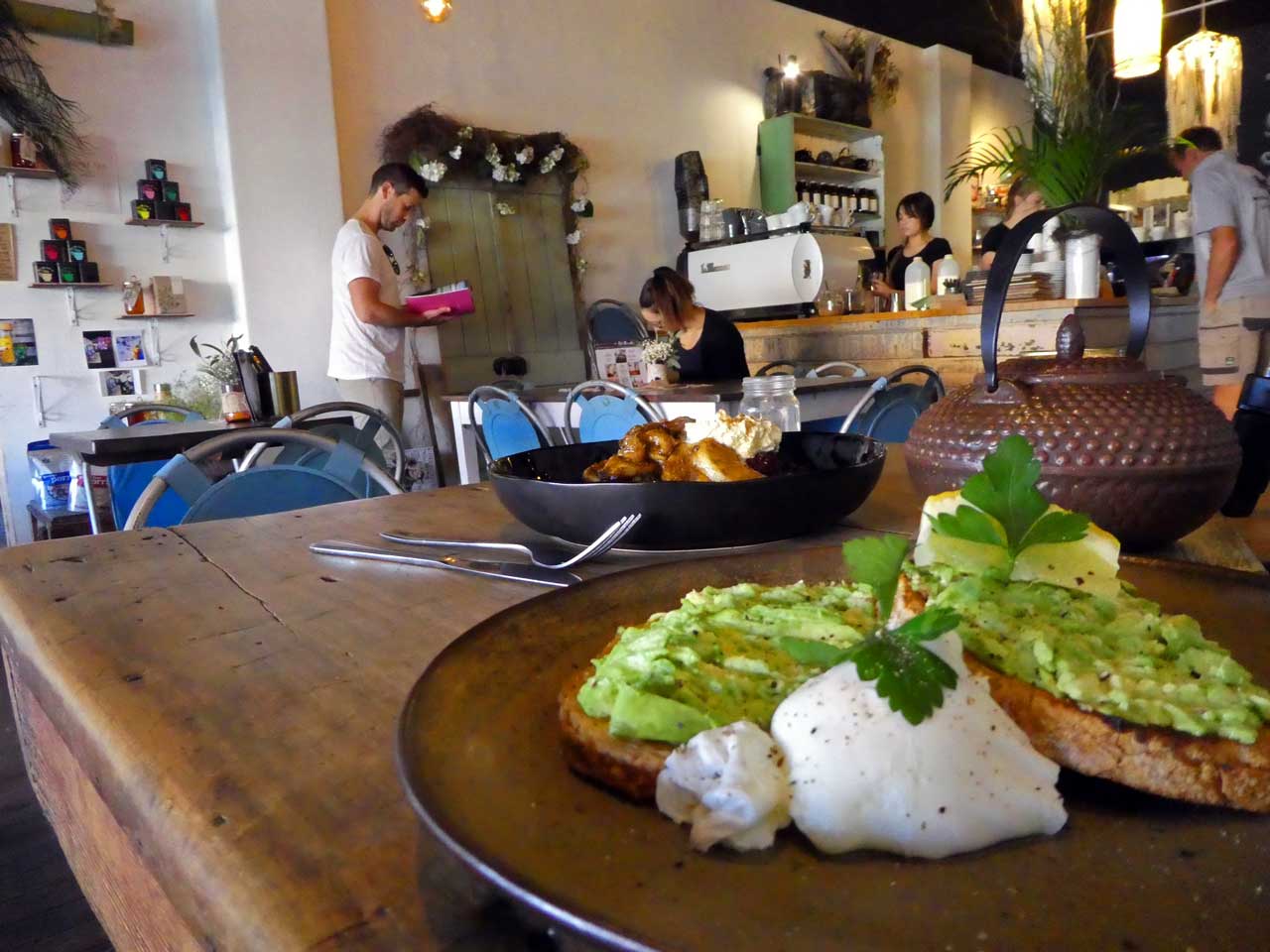
On the road to Lawrence
We followed Queen Street out of town onto the road to the village of Lawrence. It winds through the flood plain of the Clarence River, surrounded by farmland. Herds of cattle grazing. Paddocks of sugarcane waiting for harvest. Everything green, green, green and the blue-grey expance of the river coming into view along the way. There’s a stunning rural vista at every turn. We stopped at the Lawrence wharf to watch a few fishermen mucking about in their boats. Lawrence is a crossing point on the Clarence – not by a bridge – but by the Lawrence-Bluff Point ferry. This ferry operates 24 hours a day seven days a week and can carry up to 24 vehicles. This seemed a far more interesting way to traverse the waterway – and it was. A short wait to drive on, the groaning and creaking of massive cables and three minutes to the other side.
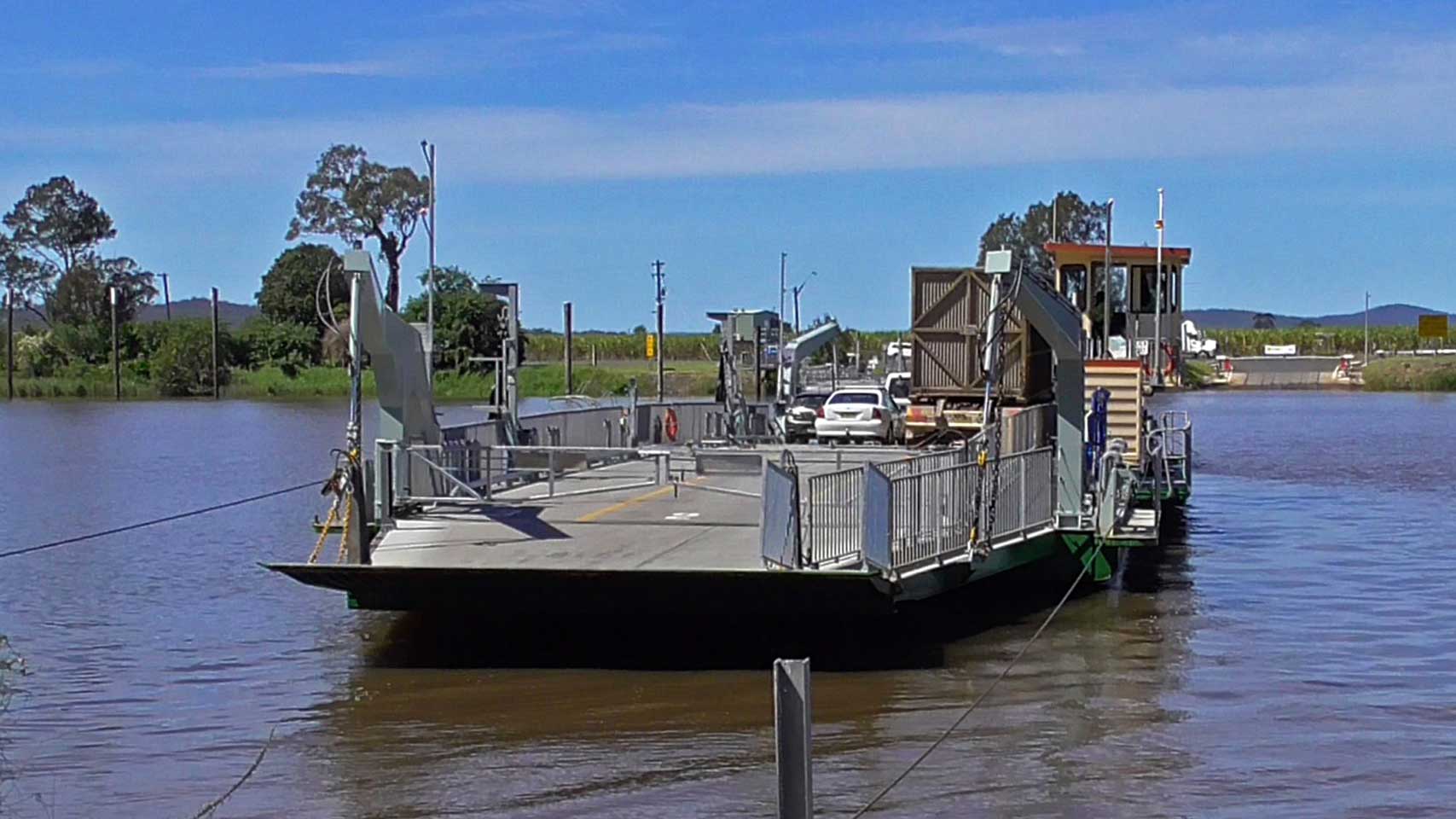
The quirky Lawrence Museum
Before we even made the ferry we were hopelessly sidetracked by a visit to Lawrence Museum. It’s housed in an old radio broadcasting station – the mast of which can be seen for miles around and has been a landmark since since 1936. Like all country museums, it houses the flotsum and jetsum of local life over decades. Highlights of the collection include an old ‘dunny’ and very old tractor near the front gate, the original settlers cottage, a replica blacksmith’s shop with tools and equipment, the sulky shed complete with sulky and a hand-drawn ambulance. There is a wedding dress circa 1864, the court bench books from the Lawrence Court House and a very large collection of telephones, radios, photographs and publications. But for my money – there was a standout object that summed up riverside life in so many ways: A 7.5m cedar flood boat named the Cedar Queen. The vessle was reputedly made from full length planks cut from a single tree cut down at the head of The Clarence River. Flood boats were an important part of river life – used to deliver supplies to stranded families and to rescue people. You’ll find this beautifully made and very rare boat out the back in a shed.
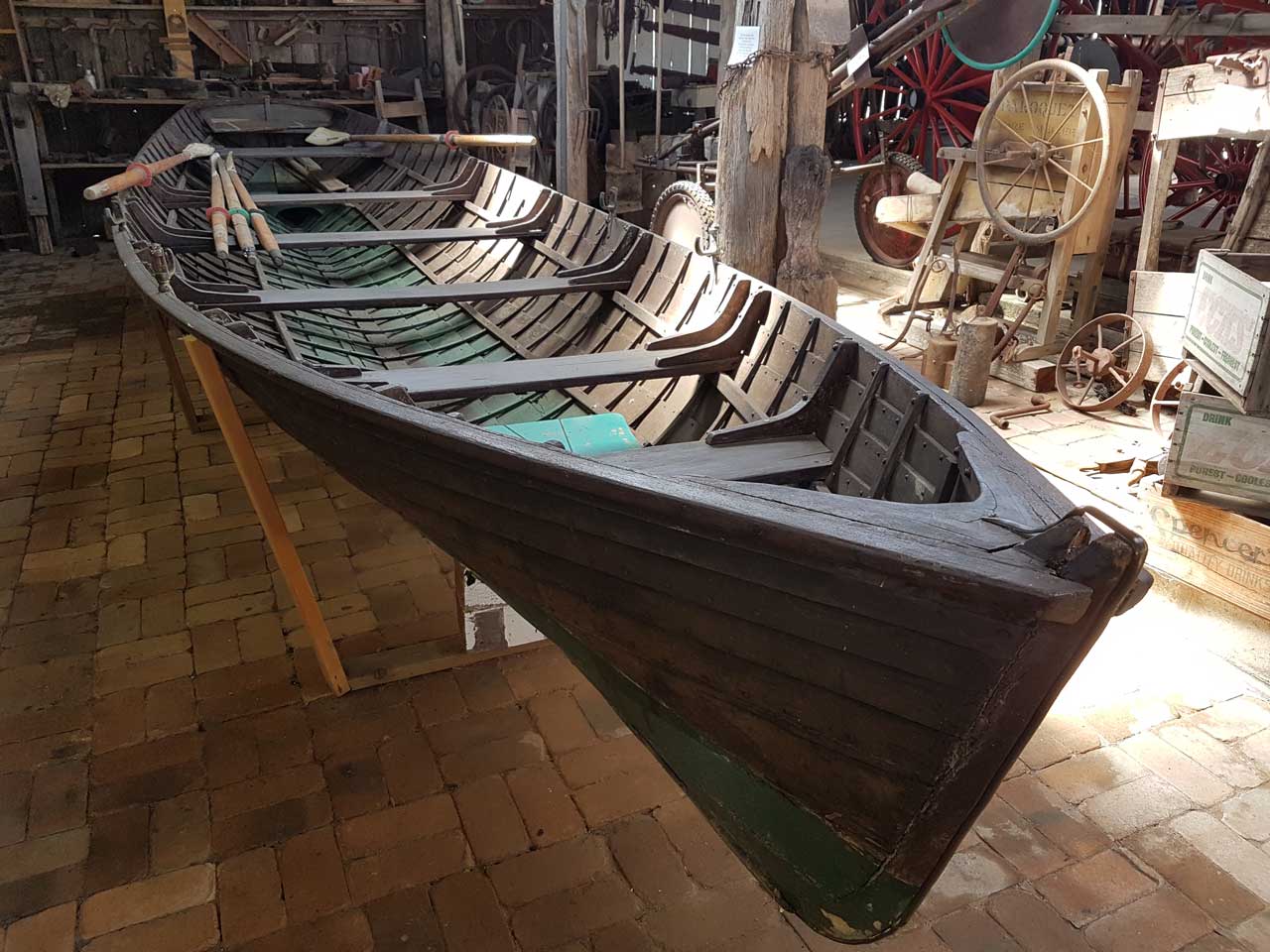
Quick stop at Maclean
After crossing by the river we press on toward the town of Maclean for a cool drink and a wander. Its one of the few places you can get high enough above the river to get a real senese of the scale of The Clarence River and the surrounding farm land. We took a drive up to Herb Standford Memorial Park for the view – and also to see the “Scottish Cairn” – a memorial celebrating the town’s Scottish heritage. And just in case you missed them (almost impossible to do) the town’s power poles are painted in tartans. There’s a few quirky old wares shops we poked around, and stopped to watch stuff happening on the river. It’s a quiet little town with lots of historic buildings.
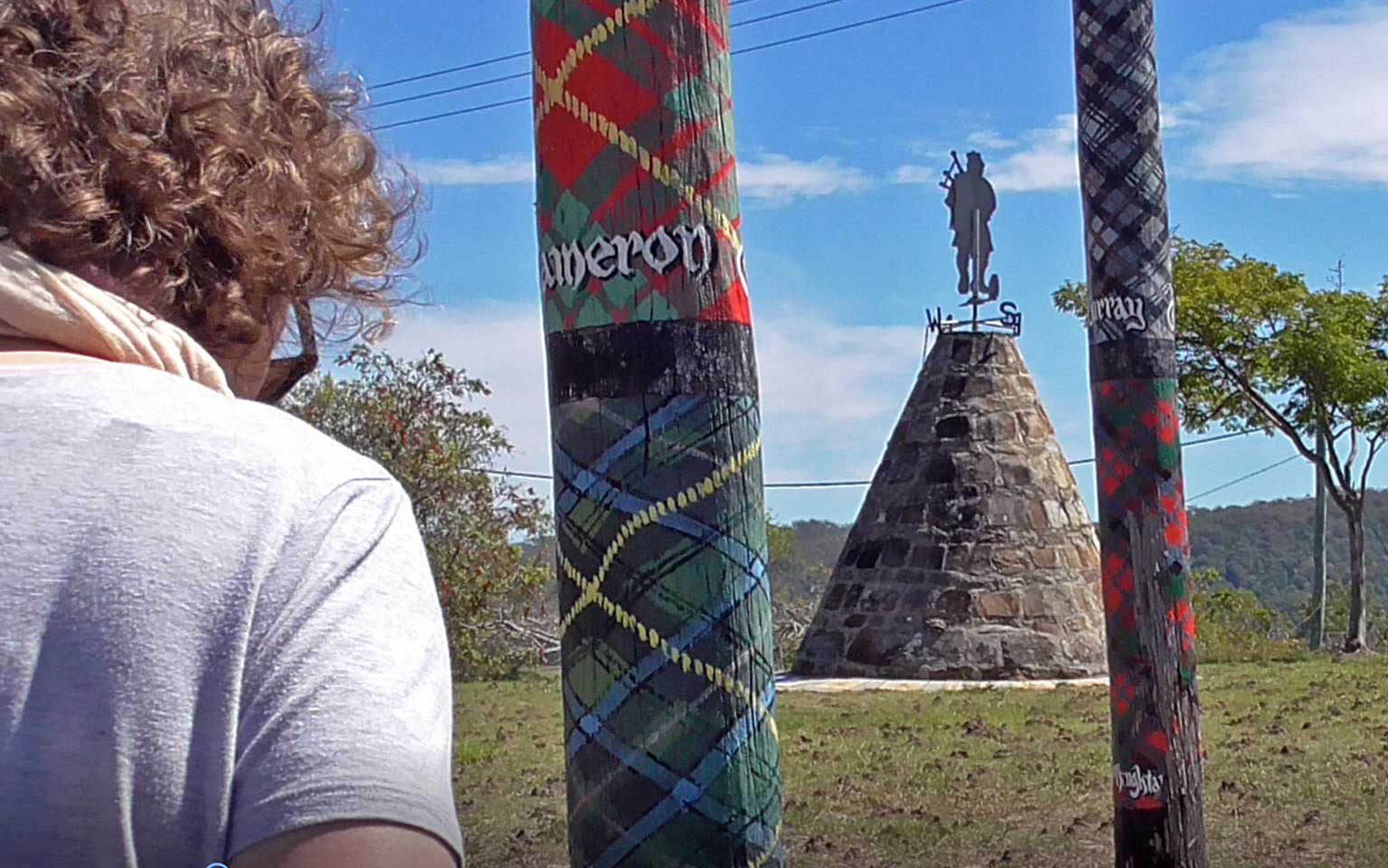
Lunch at the river mouth
Just 15 minutes up the road from Maclean, the scenery changes dramatically to coastal mangrove as The Clarence reached the sea bewtween Yamba and Iluka. It’s lunchtime and we can’t resist the lure of a hotel which claims to be “the best sited hotel in Australia – Yamba’s iconic 1934 Pacific Hotel. It’s set on a bluff overlooking the beach and Wooli Bay from which you can see the breakwaters that guard the river mouth. It doesn’t take long for us to agree that, well, yes, this is a pretty good spot for a pub. What could we choose but the fish and chips and a cold beer to enjoy while we admired the spectacular views. In one direction swimmers in the surf in front of Yamba Surf Lifesaving Club and in the other the The Clarence Lighthouse which has been a maritime beacon for safety for decades.
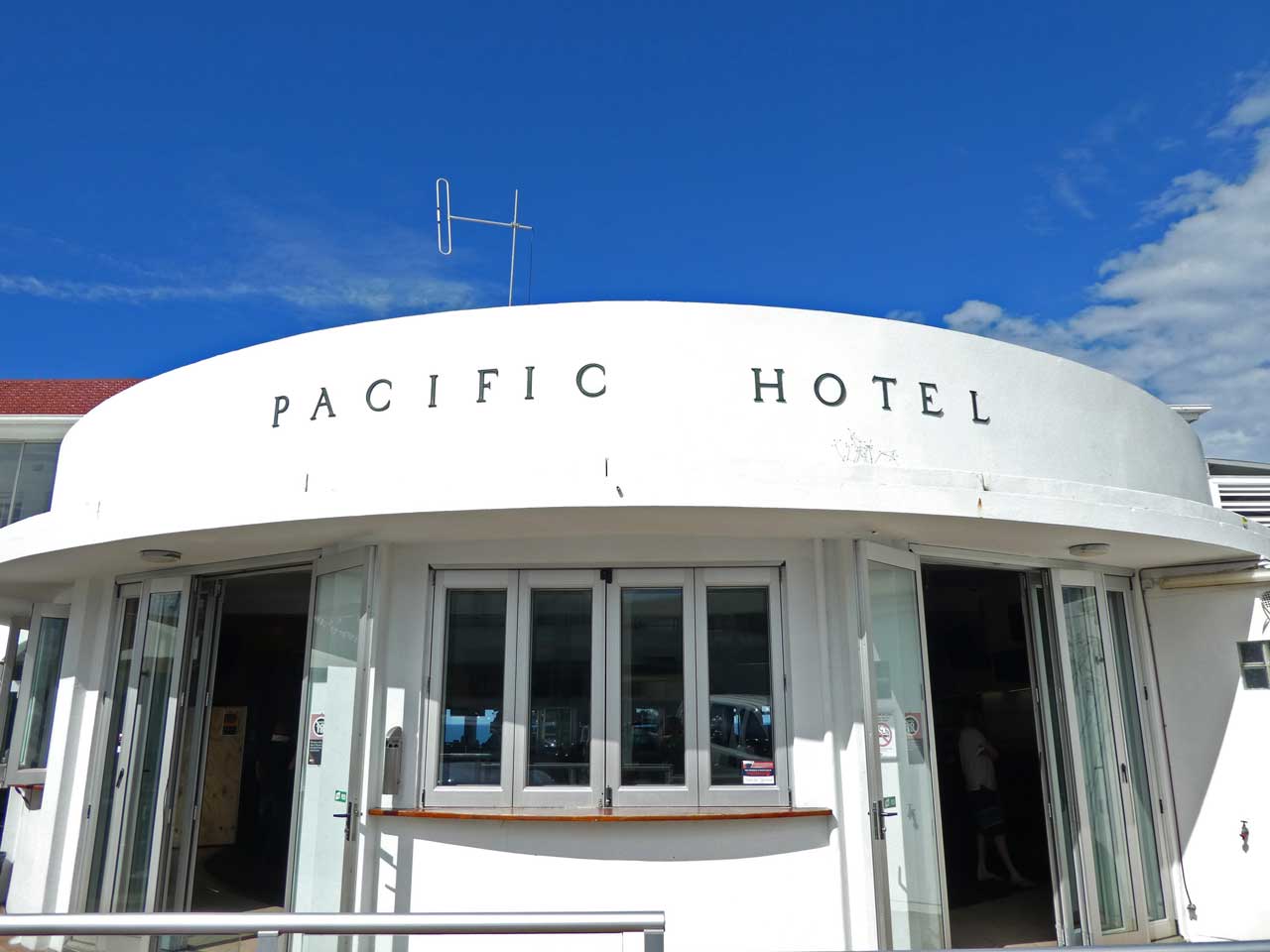
Ferry to Iluka
After some unstructured wandering about on the shores of the river mouth walking off our lunch, we make our way down to Yamba Wharf where we plan to catch the Clarence River Ferry to Iluka and back. It’s the last trip of the day, so we can’t stay on at Iluka, but that’s OK with us. We just want to look anyway. The ferry chugs off down river and carefully crosses to Iluka to deliver some passengers. Its a peaceful round trip and a chance to watch life going on around the river. Clarence River Ferries also runs lunch tours a couple of times a week. Hopefully we’ll be able to do that next time.
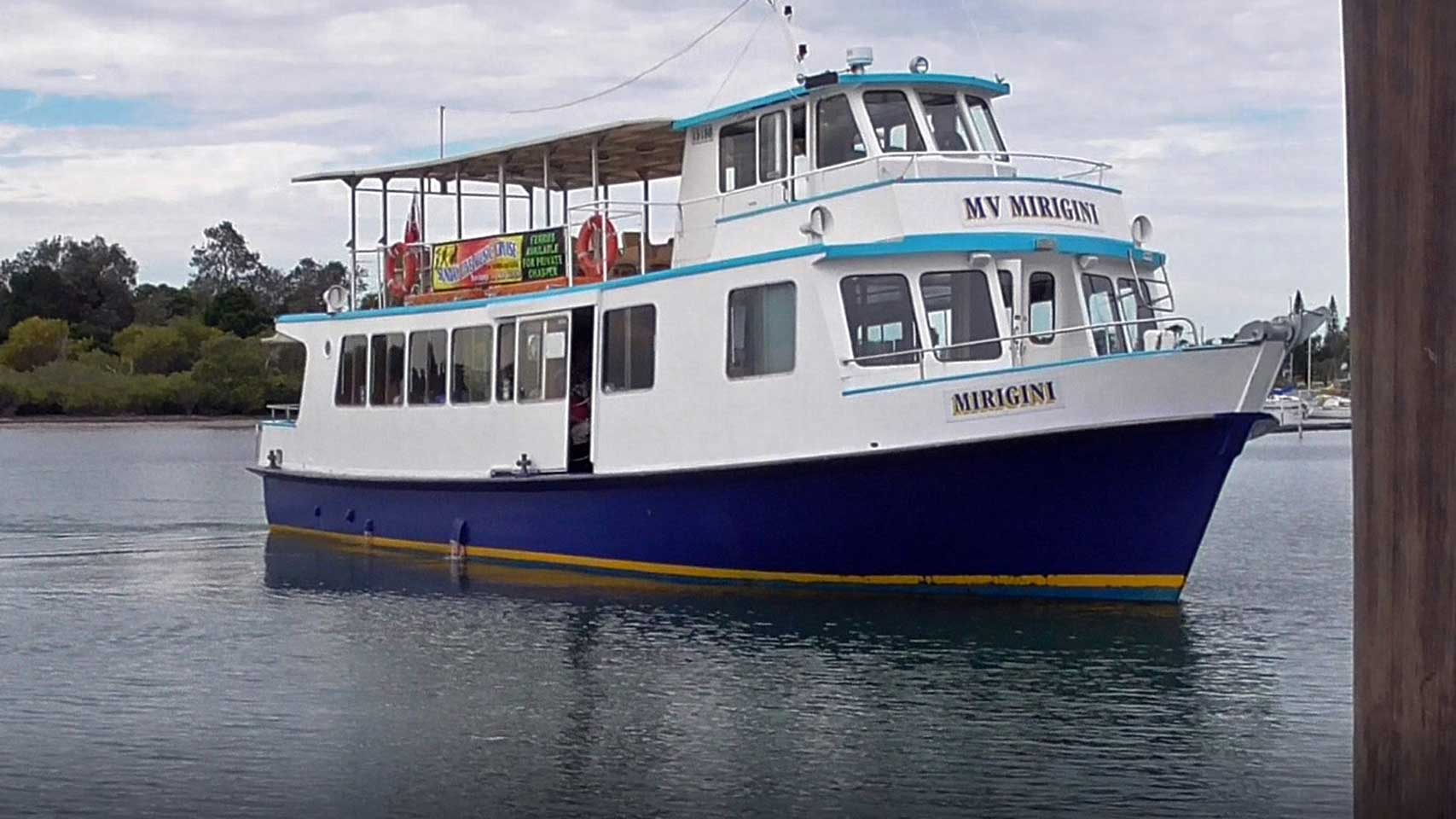
End with the sunset
By the time take the leisurely drive back to Grafton, the day is coming to a close. There’s so many other things we would like to have seen – but you can’t do it all in a day. It’s one of the reasons we’ll be back here for another visit.

More Two Minute Postcards
- The volcano that flattened Swansea
- A relic from Australia’s worst race riot
- Convict road: The masterpiece time forgot
- The oil town that vanished
